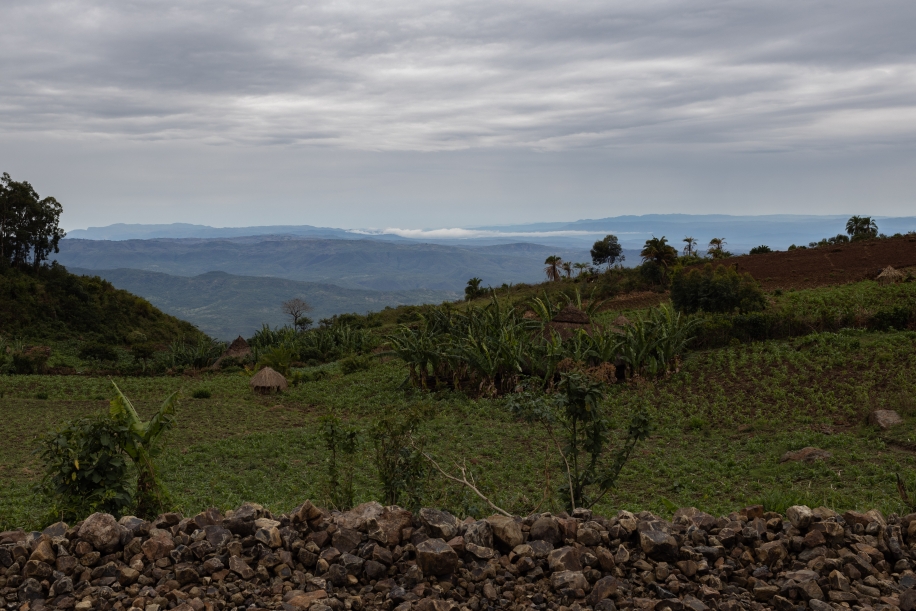

The vast Suri land of the Omo Valley is a symbol of resilience and tradition, but it faces growing challenges. Climate change, with its droughts and erratic rainfall, threatens their livelihood, while the Ethiopian government continues to sell land to outside developers, sidelining the Suri in the process. Marginalized and excluded from key decisions about their land, the Suri people are left to fight for their rights, striving to preserve their heritage and way of life in the face of these mounting pressures.
Suri Guardians: A Documentary Exploration of Tradition and Legacy
Matilde Simas | Omo Valley, Eithiopia, Ethiopia
Photographer: Matilde Simas
Exhibit Title: Suri Guardians: A Documentary Exploration of Tradition and Legacy
Location: Omo Valley, Eithiopia, Ethiopia
The Omo Valley in southern Ethiopia is one of the world’s most ethnically diverse regions, home to indigenous tribes that have preserved centuries-old traditions. Unaffected by colonization, these communities offer a rare glimpse into humanity’s cultural heritage. Among them are the Suri, known for their striking use of flowers and self-adornment—a vivid expression of their identity, culture, and connection to their enviorment.
In an era marked by rapid globalization and environmental change, photography plays a crucial role in cultural preservation. Indigenous communities, such as those in the Omo Valley, are increasingly vulnerable to modernization and climate challenges. Many of their traditions, which have survived for centuries, now face the threat of disappearing.
This series celebrates the Suri’s artistry, each portrait balances documentary authenticity with artistic sensitivity, highlighting the interplay of color, texture, and natural light while preserving the essence of Suri life. Through her lens, Matilde honors the Suri’s cultural guardians—land protectors, water custodians, youth, and elders—bridging their world with a global audience and celebrating their strength and legacy.
The Artistic and Ethical Challenges
Photographing indigenous communities requires careful ethical considerations. It is essential to approach such projects with humility, ensuring that the community’s voice is heard and respected. In the case of the Omo Valley project, I made a conscious effort to collaborate with the Suri people throughout the process, allowing them to have agency in how they were represented.
As part of this collaboration, a portion of the proceeds from the project was donated to support the community’s needs, as identified by the Suri themselves. This approach emphasizes that the project is not about the photographer’s perspective alone, but a shared experience where the subjects are co-creators of the work.
Photography as a Personal Journey
This project was more than just a professional undertaking—it was a deeply personal journey. My passion for documenting diverse cultures was sparked during my college years when I formed lifelong friendships with East Africans who introduced me to their traditions. This connection led me to explore Ethiopia’s tribal communities, culminating in my visit to the Suri people of the Omo Valley.
The experience was transformative. The bonds I formed, the stories I heard, and the artistry I witnessed deepened my appreciation for the diversity of human expression. Through photography, I was able to share this journey with the world, inviting others to see life through a different lens.
Photography as Cultural Preservation
In an era marked by rapid globalization and environmental change, photography plays a crucial role in cultural preservation. Indigenous communities, such as those in the Omo Valley, are increasingly vulnerable to modernization and climate challenges. Many of their traditions, which have survived for centuries, now face the threat of disappearing. The role of photography in documenting these practices has never been more vital.
Through this project, a visual archive has been created that not only preserves the artistry of the Suri people but also raises awareness of the urgent need to protect these cultures. These images serve as a living record, allowing future generations to understand and appreciate the richness of the Suri’s cultural heritage.
With deep respect and admiration for the Suri people, a donation was made to assist with any needs the community identified. Additionally, all participants in the portraits volunteered willingly and shared insights about themselves and their way of life, offering a unique and authentic glimpse into their traditions and values.
Matilde Simas
www.matildesimas.com
Make Comment/View Comments